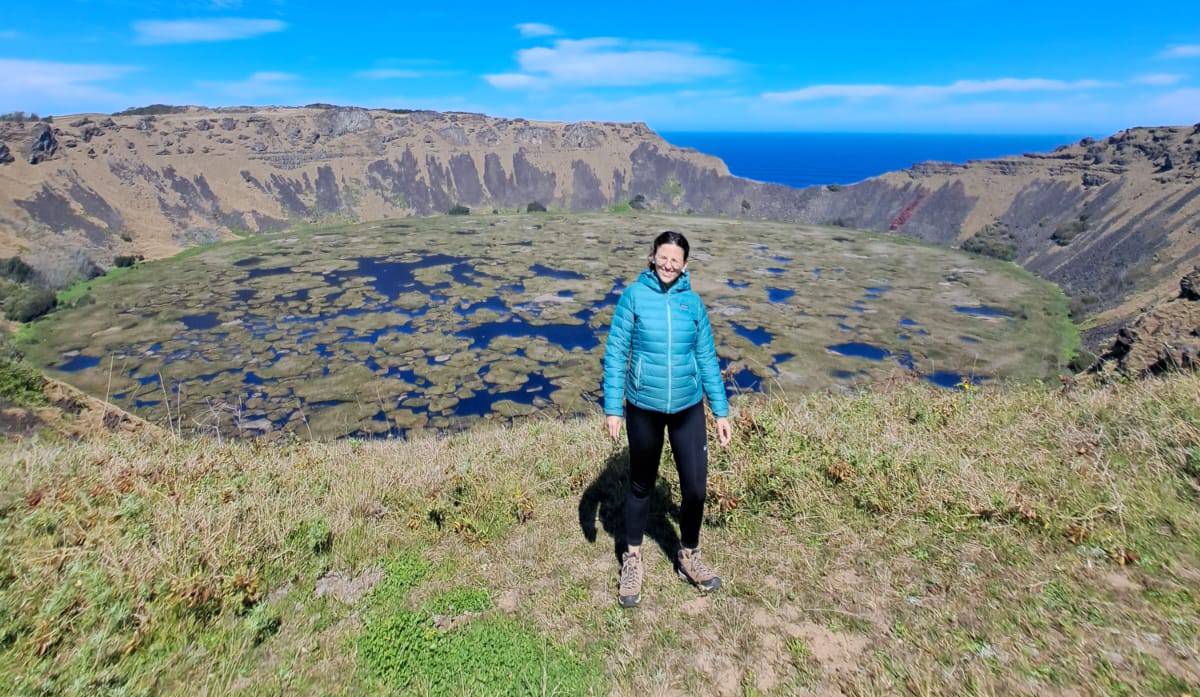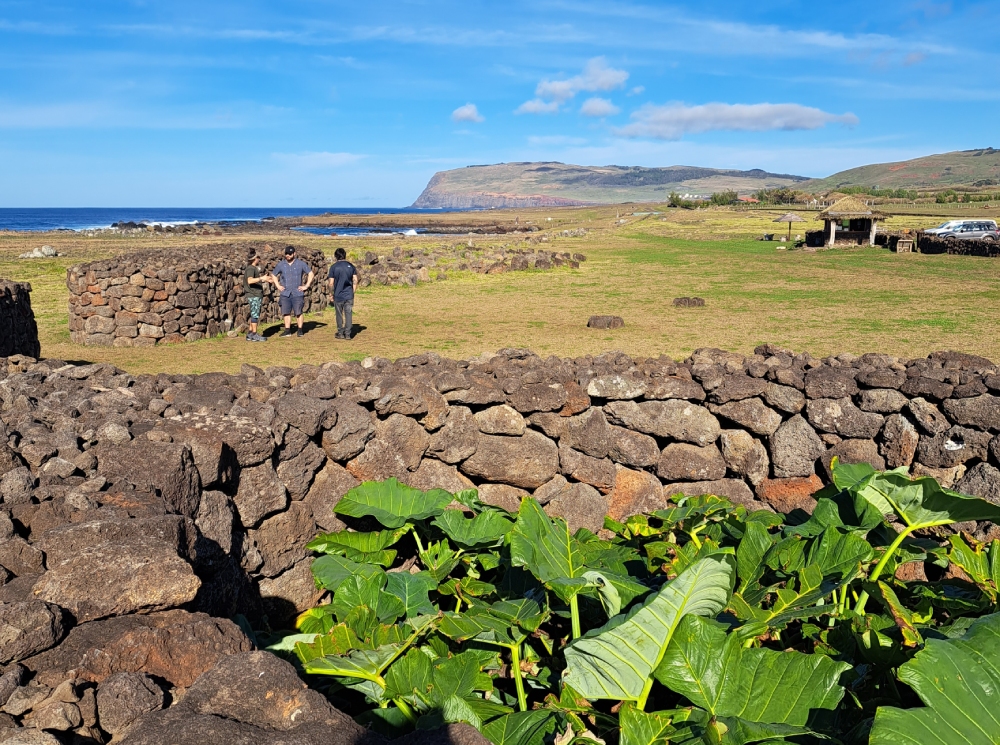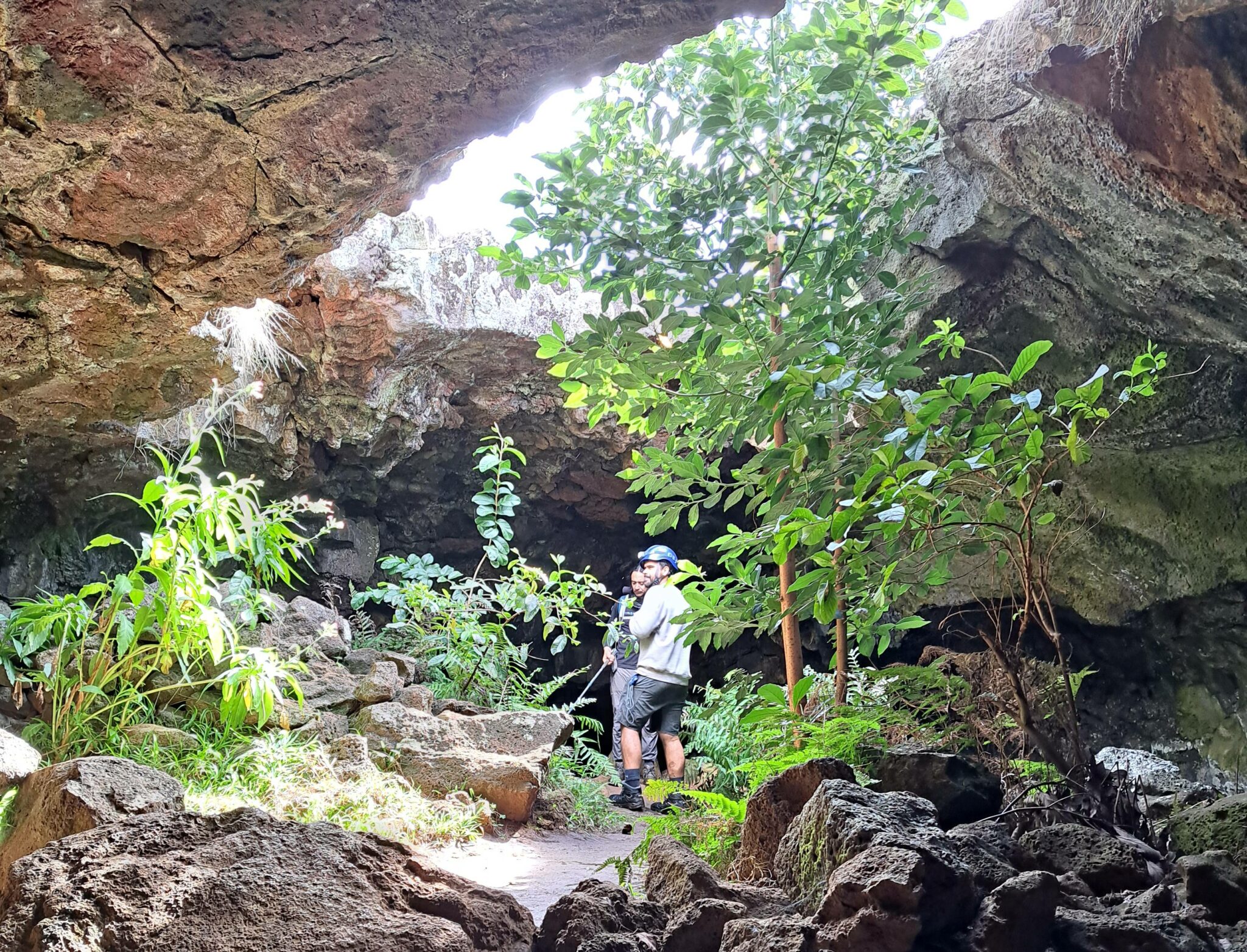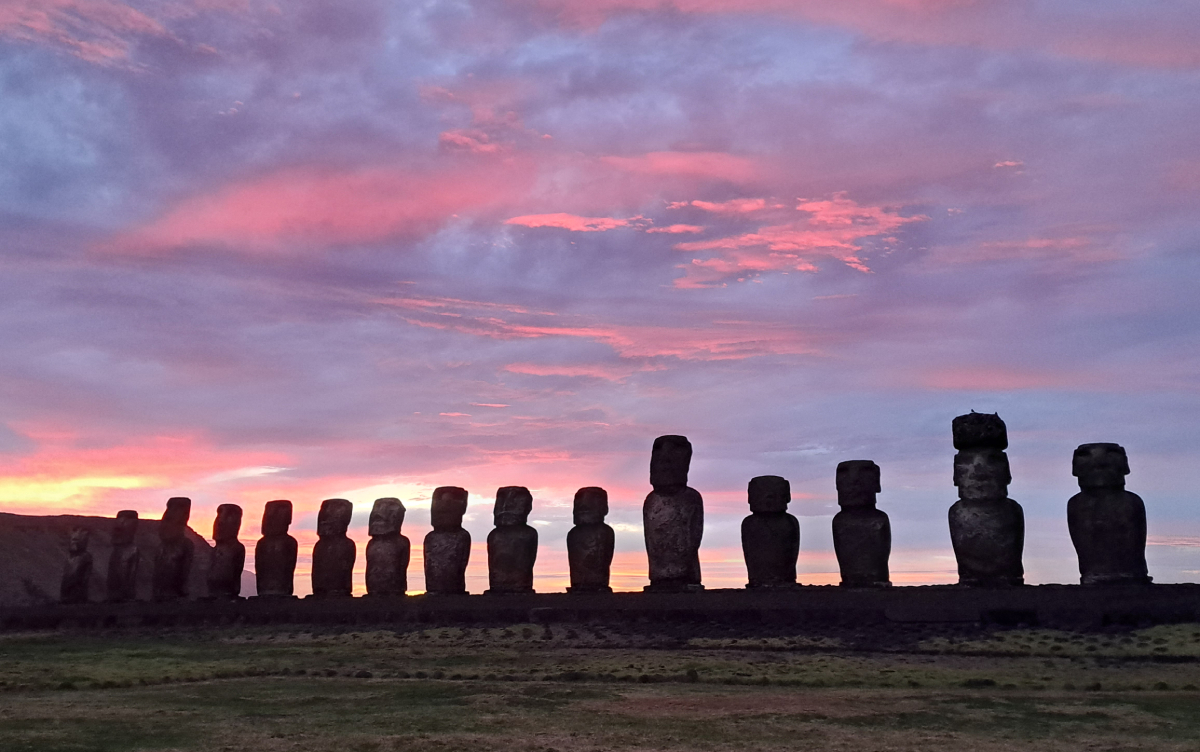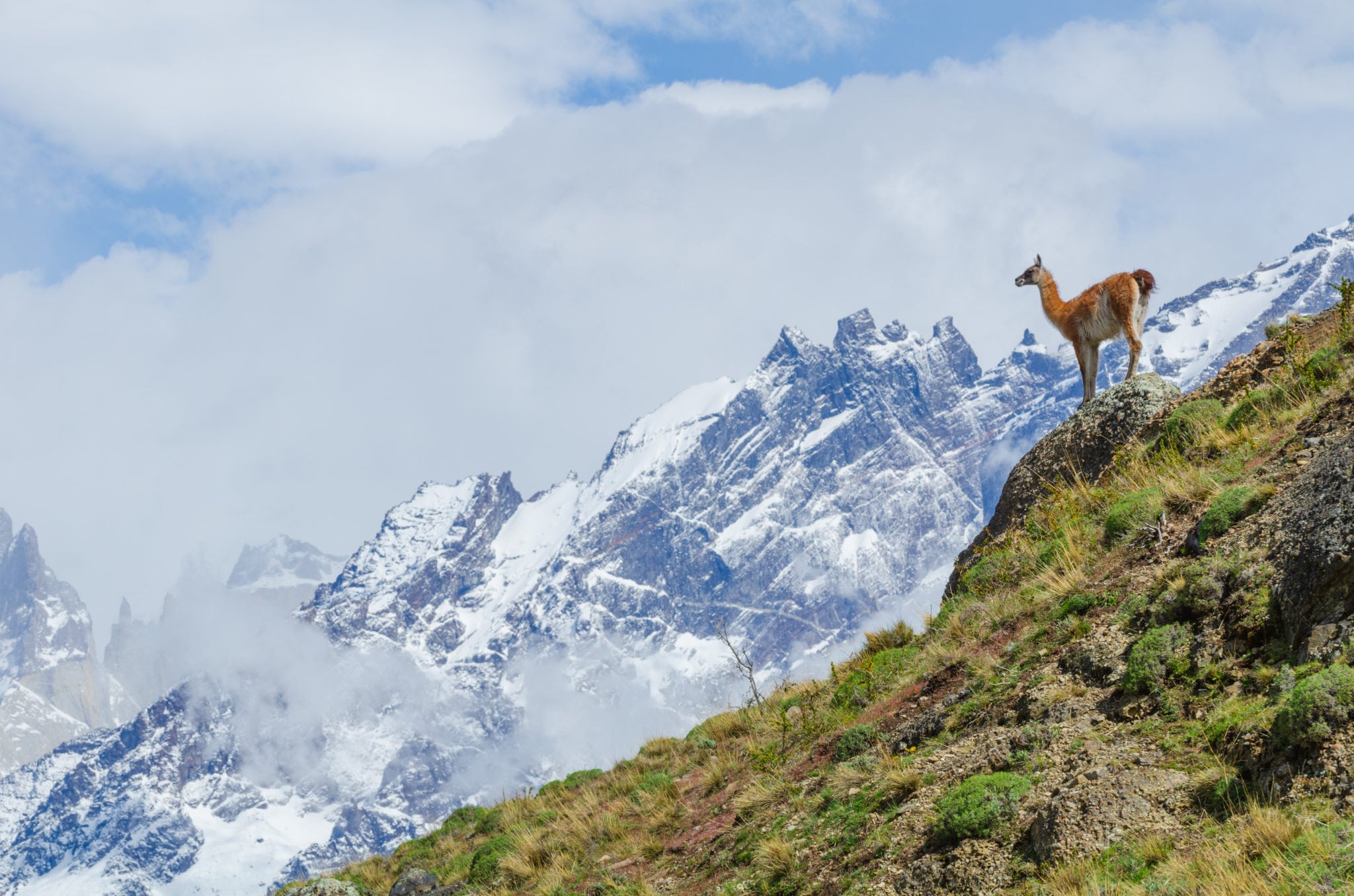In August 2023, Claudia, one of Ecochile’s Travel Specialists, visited Easter Island to see how the island’s tourism has changed since the pandemic. One thing that was adamantly clear was that the magic and charm of Easter Island remains as fascinating and enticing as ever.
In this blog post, Claudia tells us about how she was enchanted on her week on the island the locals call Rapa Nui.
Arriving on Easter Island
After an early start on a Saturday morning, we headed to Santiago’s airport. Travelling to Rapa Nui, otherwise known as Easter Island, means going through the special customs area of the domestic terminal for Easter Island and filling out the required entry form to protect the ecosystem and control the number of tourists.
The flight is surprisingly long – 5 hours flying over nothing but the Pacific Ocean. Then, all of a sudden, the emerald-green island appears in the middle of the sapphire-blue sea. You can see the waves crash against the cliffs and the volcanoes and craters that dot the island. As you get closer though, tiny figures looking out to the coast appear – my first sighting of the moai statues that make Easter Island so famous.
Stepping out of the plane, I was welcomed immediately by the Easter Island breeze and a wall of greenery. The luscious green jungle veins where the tarmac ends and seemingly coming from it, the sound of Rapa Nui music. Local guides greeted me with a customary Rapa Nui flower necklace as we walked out. It couldn’t have been a better start to an incredible week on Easter Island.
Guides and caring for the island
These guides are a must on the island, not least because there are so many monuments that it is hard to tell what is a rock and what is a monument! The guides are a font of knowledge when it comes to all things Easter Island and, as well as showing you all the hidden spots on the island, without them, you can’t get into any of the parks or see the monuments up close.
All the archaeological sites are looked after like a giant museum over the whole island. Although there are a couple of decorative reconstructions, Sebastián was great in helping us identify which were real and telling us the story behind the replicas. I was definitely amazed at how well cared-for the artefacts are, and how much the locals respect the history and the island’s ecosystem completely.
Seeing how locals care for their island was fascinating. They truly care for their land, practicing traditional land management including Manavai – a way of watering plants and gathering water. That is also why there are more limitations on what you can do, where you can go, and what you can touch (don’t touch the moai statues!). Far from seeming restrictive, these rules make you feel like you are part of the island’s story, helping to protect it for other generations.
Exploring the Island
We were incredibly lucky to be able to spend a whole week on Easter Island, which meant we were able to see almost everything. We visited so many of the moai statues (of course!), rode horses along the coast, swam in the sea, learned about the origins of Easter Island, and awed at its outstanding beauty.
But the highlight of the trip was definitely exploring the underground caves. There are caves are scattered around the island, and some are open to tourists. My partner was a little nervous as he was unsure of how safe they were and how much we would see, but the guide was very reassuring. We donned our helmets and, looking back, I couldn’t be more glad that we both made it.
The Caves
Walking into the caves was like walking into another world. Each was unique and holds a part of Easter Island’s history. Gods, demons, and animals are carved into the walls. These petroglyphs (stone drawings) are tiny artefacts which, along with tools and the design of the caves themselves, offer a glimpse of the islanders’ historic cultures and the beliefs that shaped the island. Although the caves would be fantastic at any time of year, we were lucky to visit during the off-season meaning that many of the caves were empty.
Sebastian, our expert guide, told us the story of three different caves we visited adding another level of understanding and fascination. The first cave was a strategic lookout point for the islanders, two windows meant approaching boats and potential invaders could be spotted. Another, filled with the weight of its history, had once served as the island’s prison. And finally, the third cave was a kind of temple, adorned with petroglyphs of the island’s god, Make Make, to which women and their partners were sent for the caves fertility-boosting powers.
The History
The island has been home to a lot of tribes over the years – despite only being a 1,000 years old. Each tribe has changed the island and we can see their legacy everywhere – in drawings, statues and caves – but very little is really known about them. A lot of theories exist though and this makes for great conversation with guides and fellow travellers over dinner.
These days the island is ruled by its weather. There is an almost constant wind, which can affect activities but it doesn’t really affect the temperature. We visited in the winter, so it stayed between 15-20C (60-70F) most days although the locals were wrapped up warm. Don’t be fooled by the cooler temperatures though – make sure you pack and apply sunscreen!
Our most memorable moment…
It is pretty much a fact that you’ll leave the island with more friends than you started with. The guides and those they show around often make real friendships, creating networks of Rapa Nui devotees across the world.
When I think back to my time on the island my mind returns straight away to the sunrise in Tongariki. Watching the sun emerge from to the side of the statues (it emerges from behind in the summer) as lit up the sky in an array of pastels was unforgettable. It was also a brilliant way to say goodbye to the island and the memories we made there.
